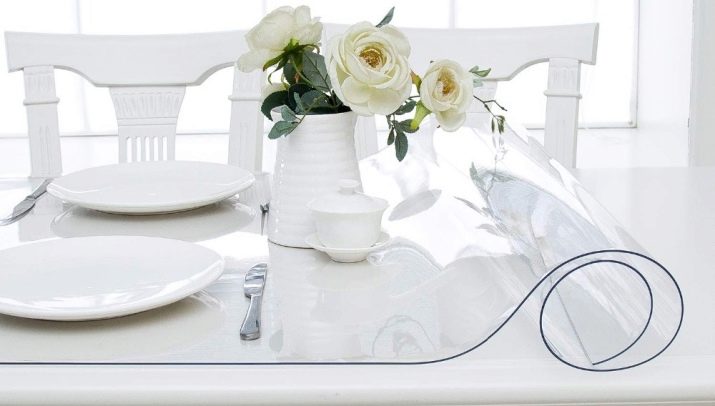Varieties and secrets of choosing transparent tablecloths
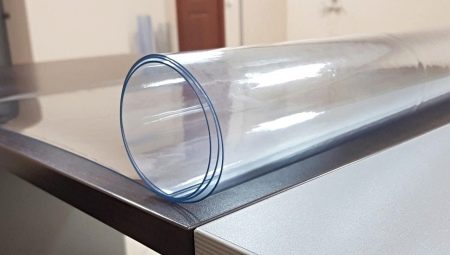
A transparent tablecloth is a pursuit of practicality, an opportunity to take a fresh look at the interior and reduce the hassle of cleanliness and beauty in the house. And this option is also suitable for those who are tired of multicolor, want simplicity, restraint, brevity.
Advantages and disadvantages
Each tablecloth has pros and cons, the question is which of these outweighs. But there are no universal options, therefore it is necessary to evaluate this type of flooring on the table from the point of view of the most relevant requests.
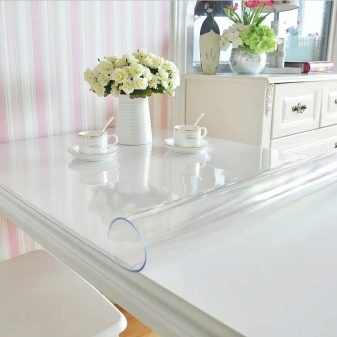
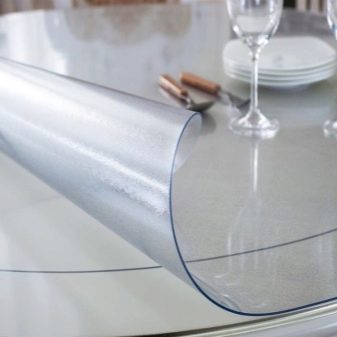
Advantages of a transparent tablecloth.
- It is as easy to maintain as possible. Wipe it, or even washed it with a sponge or damp cloth, and it is clean. You don't need to wash in the machine, sink or basin. There is no need to be afraid that it will be flooded or stained with something.
- Does not disturb the picture. A fabric tablecloth, colored or printed, cannot be matched without attachment to the interior. Transparent flooring does not have such a problem: it goes practically to everything.
- Affordable price. There is no need to save money to buy. This is not a silk tablecloth, not a branded thing, the thing is available.
- Doesn't obscure the nice texture / color of the table. Sometimes you don't even want to lay the tablecloth, because it covers the tabletop itself.
- Practical. In everyday life, in the kitchen, this element will not cause trouble. There are much more of them with fabric products.


All these pluses are obvious; when buying, attention falls on possible minuses.
Disadvantages of a transparent tablecloth
- Doesn't look smart enough. But, perhaps, such a function is not assigned to her.
- Does not comply with environmental principles. Silicone and plastic tablecloths, of course, contradict the environmental friendliness of everyday life.
- Small choice in terms of design. Because it is especially difficult to roam here: transparent and everything, except that it is darker / lighter, differs in shape and size.
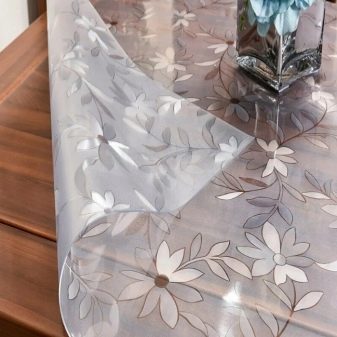
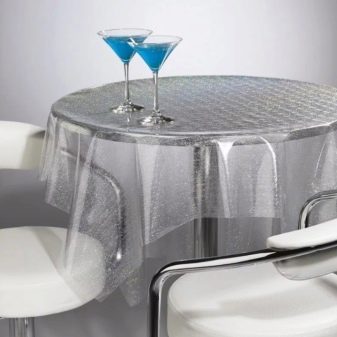
Such a tablecloth is bought upon request, and therefore all the pros and cons are assessed according to the situation.
Species overview
Tablecloths can be divided into categories according to the principle of shape, material, as well as some additional characteristics.
By form
Most often bought rectangular and round transparent tablecloths. Oval used less often because oval tables are also rare. And also such tables are usually used for festive occasions, not used every day, and transparent tablecloths are more intended for everyday life. By the way, it will be interesting to look at the round table square flooring - proven many times in practice.
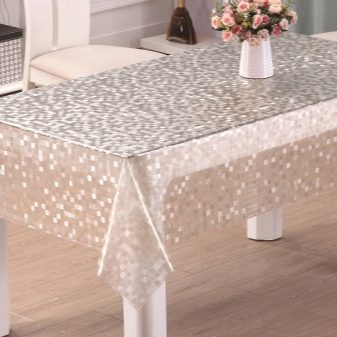
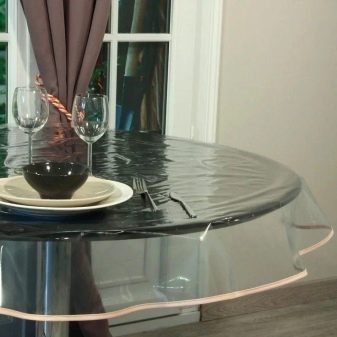
By material of manufacture
There are a lot of options here: from cheap oilcloth to stylish film tablecloths.
The materials used are different.
- PVC. Polyvinyl chloride is a universal, multifunctional substance that is actively used in everyday life. Products made from it are cheap. PVC is not afraid of water and dirt, stains do not stagnate on it. You can call it convenient and from the point of view of the choice of design, the patterns, indeed, are different. True, such tablecloths cannot be called heat-resistant, the plastic will melt.
- Silicone. They look sleeker than PVC tablecloths. They look good on both glass tables and wooden ones. For a kitchen space, this is a handy tool to make it feel more airy. For example, if the interior looks heavy, such a tablecloth removes this visual blunder. But still, it is more often used in minimalistic interiors. And the heat resistance of such a tablecloth is enviable, and the thickness is good. She looks more reliable.
- Cotton. And such a soft, delicate product can also be found. Transparent cotton lace stands out from the general row, it is already an eco-product. But it is more vulnerable, not as practical as other products.

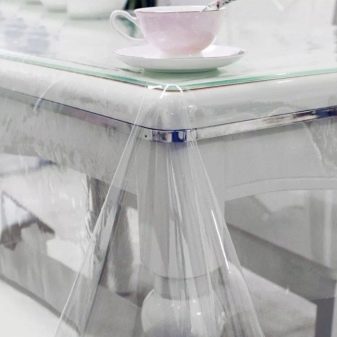
The concept of "liquid", "flexible" or "soft" glass is not the name of the material, but rather its category. In most cases, this is precisely PVC or silicone. The material can be sold in tight rolls, or it can be sold individually (that is, a bordered tablecloth, ready to use).
Very often such products are rated as protective. They are not decorative, they do not serve the initial idea of laying the table, but are protection for the tablecloth below, or for the tabletop itself, which nevertheless does not want to be blocked.
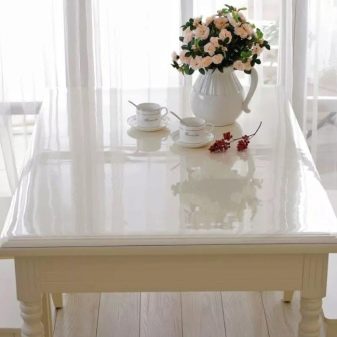
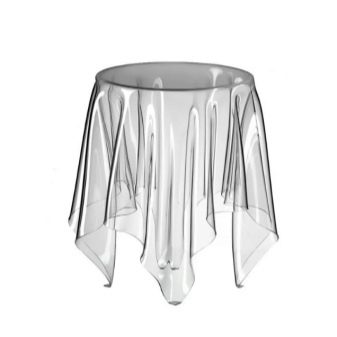
Dimensions (edit)
Usually the tablecloth should be at least 20% larger than the table surface. More is possible. In the case of a transparent product, a small value is allowed, equal to the table top. It will not hang from the edges of the table, if this is not provided for by the design: if the tablecloth is thick, dense, this is normal.
But still the standard models are larger than the table size. If the tablecloth is festive - more by 70%, if everyday - by 20-40%. The most popular sizes include: 90x90 cm, 65x45 cm, 120x75 cm, 150x120 cm and 180x135 cm.


Design options
It seems that you can come up with it, but transparent tablecloths have many variations. True, in most cases, the rule “the best is the enemy of the good” works.
This is what the manufacturers suggest.
-
Colored tablecloths. This is the case when there is a pattern on a transparent base, and different colors are used in its creation. Not all interiors are suitable for this option, but it can look very good as a table decoration at a children's celebration. How to lay a table on a veranda can be interesting too. In other cases, it is difficult to choose an option that is in tune with the interior; you need to have good taste. This is not a white tablecloth that suits almost everything.
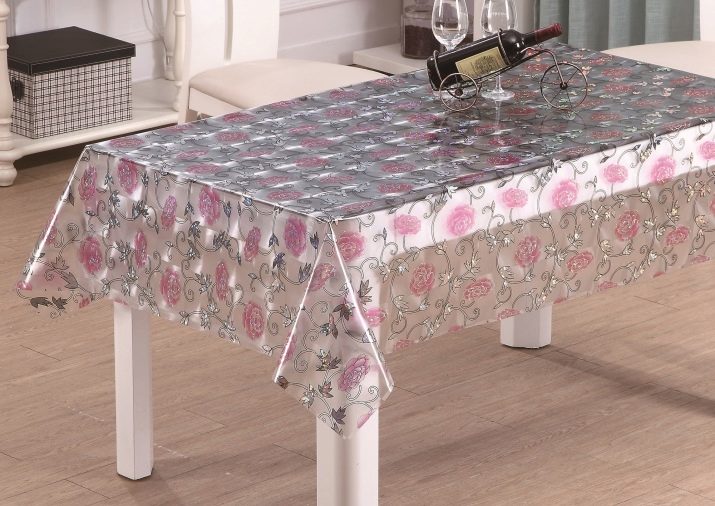
- Matte / Glossy. A matter of priority. Glossy is more complementary to small spaces, where every visual trick serves to "expand" it. Fewer finger marks remain on the matte surface.
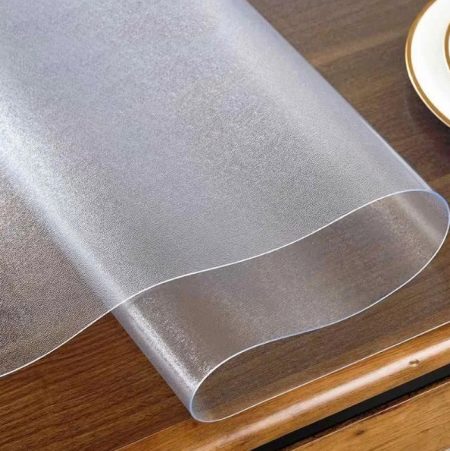
- With a solid pattern. It is desirable that the color of the print on such a tablecloth echoes with something else in the interior. With a pattern of textiles, with a pattern on the wallpaper, with a print on the chandelier. Then this drawing will be supplemented with something, beaten, it will not look like an extra element that makes the perception of the interior heavier.
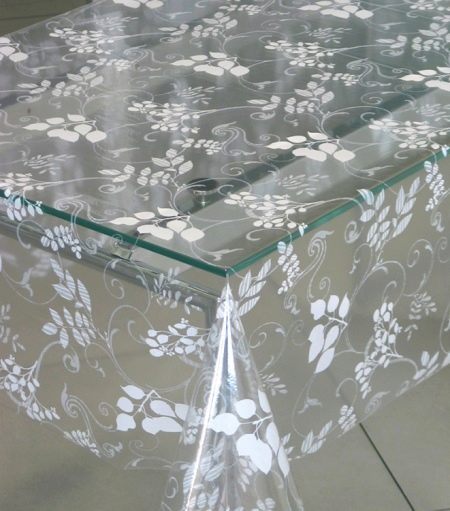
- With rhinestones. Option "very for an amateur", and today it is not suitable anywhere. Unless rhinestones are used, medium-sized, very restrained. They will play beautifully in the sun. But for daytime table decoration, this option is not very appropriate.
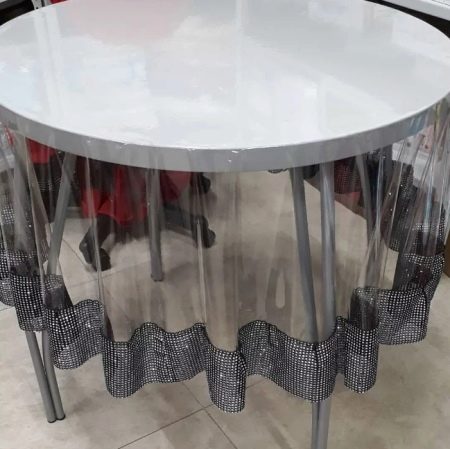
- Corrugated. It is desirable that the texture that is on the tablecloth also finds some kind of resonance in the interior. For example, with a vase on the dresser. Not necessarily exactly the same, but with obvious similarities.
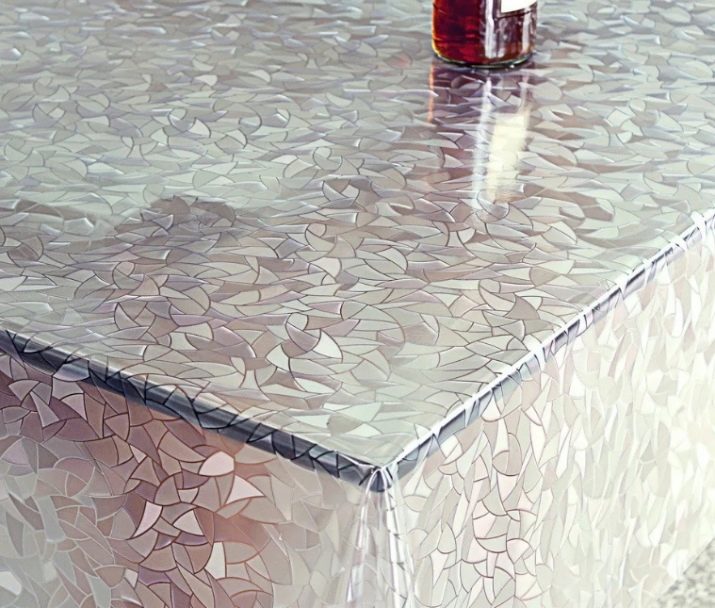
- With black / white border. A black or white border is usually chosen to make friends in the interior, to make the color combination more pronounced. If there is no such task, it is worth finding a plain tablecloth.
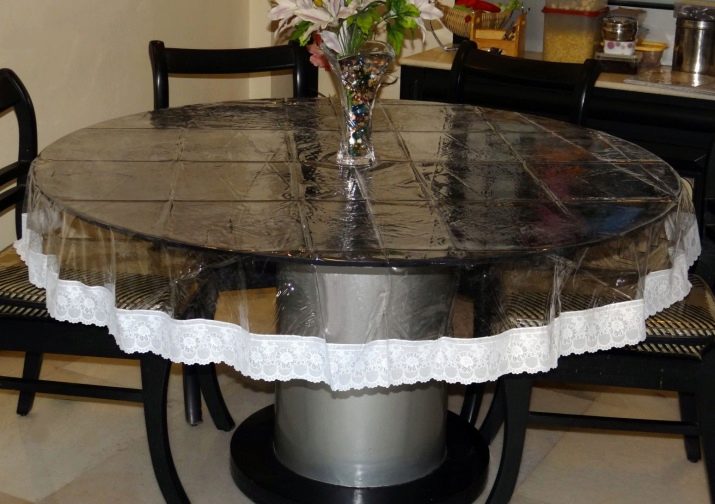
More often the principle “the simpler, the better” wins. Especially if a transparent tablecloth is used for laying the base: underneath it can be textiles or just a tabletop. And any drawings, textures will distract from the goal of protection, will draw attention to themselves. Of course, it is always necessary to determine the functionality of the item in advance, to try on situations when the tablecloth will be used.

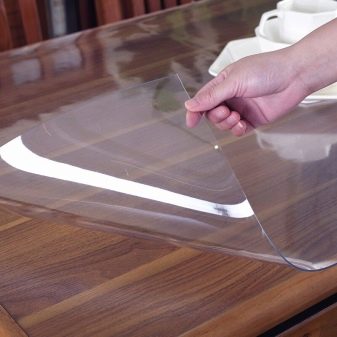
Top manufacturers
Little-known companies should not be discounted, even if there is nothing to say about their reputation yet, there may be decent quality at an affordable price. If you want to guarantee yourself a good purchase (as far as possible in principle), you can take a closer look at brands such as Niklen is a Canadian brand of plastic tablecloths and Agness is a Chinese manufacturer of polyester products.
And also interesting options are presented by Gree Textile, also a Chinese brand, and also specializing in polyester products.
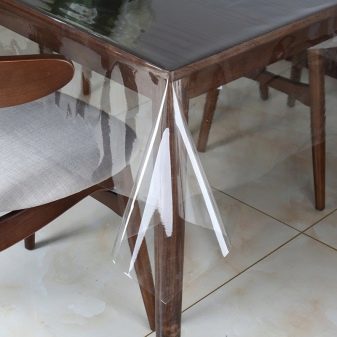
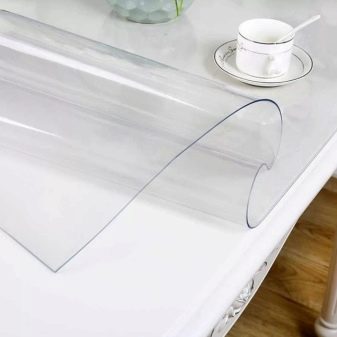
Nuances of choice
There are some small tips that will come in handy when choosing such a tablecloth.
There are a number of factors to consider when choosing a product.
- His smell. If it is a film tablecloth, it should not smell anything. Neither chemistry, nor floral aromas, absolutely nothing. Good synthetics are odorless.
- The degree of transparency. It is better to choose products that transmit light well. A cloudy tablecloth almost always suggests that it is a fake. In fact, under the guise of a transparent tablecloth, they sell you an ordinary oilcloth. Only the price is much higher.
- Thermal stability. The seller will not always let you check it, but a good seller will have control samples. If there is a trace of a cup of tea on the tablecloth, what's the use of such a purchase. In the kitchen, it will die on the very first day of use.
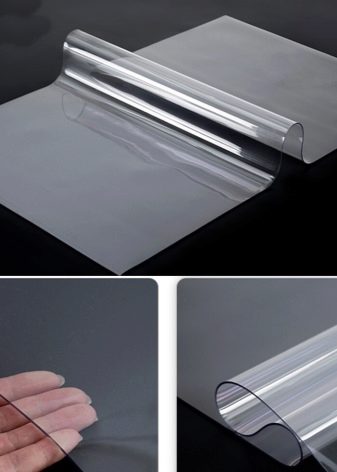
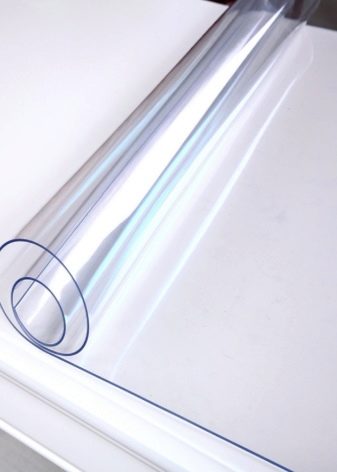
Of course, they also look at the design, how it will fit into the interior, whether it will not look unconvincing in it. In this case, watching helps a lot: you need to look at more than a dozen photos of interiors, where a tablecloth made of transparent material looks modern, appropriate, beautiful. The analysis will give an understanding, often intuitive, what to choose - which design is relevant, and which is completely alien in the given interior.
How to put it right?
Placing the film on the glass table is usually a problem. More precisely, it is not very difficult to do this, but doubts may arise as to the correctness of the assumptions.
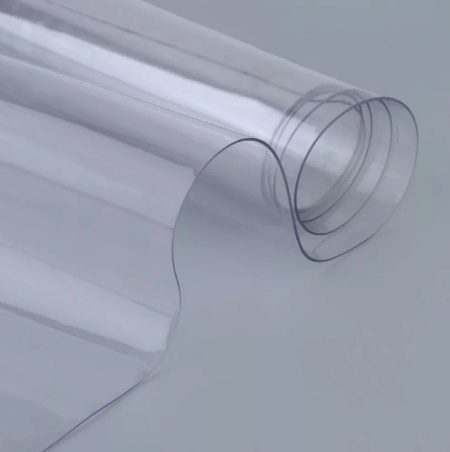
Laying the transparent tablecloth must be correct.
- Clean the countertop. Remove dust, dirt, anything that can interfere with a normal fit.
- Find the wrong side of the tablecloth and lay the product so that the wrong side is adjacent to the table top.
- Press the tablecloth against the table top, moving from the center of the table to the edges. This is the only way to squeeze out the air that collects under the material.
- If air bubbles are visible, the material can be dampened with water and try to re-lay it.
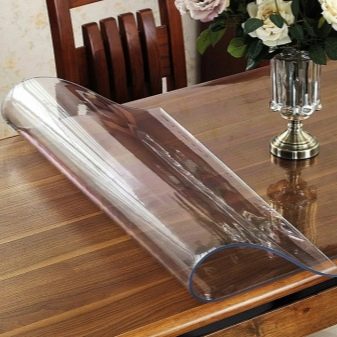
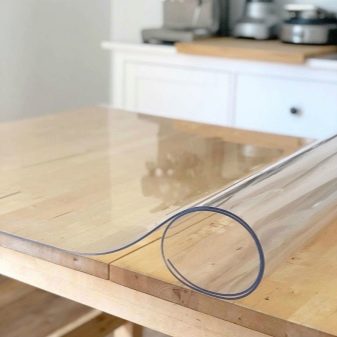
Glueing is not an option, so you can completely ruin the table. With a thick film, there is no problem of how to fix it, it is placed on a wooden or glass table, and smoothes itself for some time.You have to tinker with thinner products.
Care Tips
What is called "flexible glass" does not require much maintenance, everything is pretty standard, even intuitive. You can wipe the material with a sponge, damp cloth, the main thing is that its surface is not fluffy. Because taking care of a transparent tablecloth, on which there are villi here and there, is sheer torment.
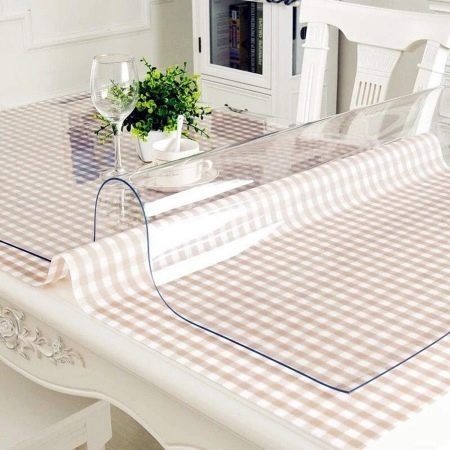
What other recommendations should be considered:
- harsh bleaches for any kind of transparent tablecloths are a huge risk;
- if it is a fabric or semi-fabric tablecloth, it must not be crumpled when washing - as it was folded the day before, so wash it;
- such a product cannot be wrung out and dried in a typewriter - at least it cannot be smoothed out later;
- if serious contamination appears on a transparent basis, it is more effective to remove them manually;
- complex dirt from a silicone tablecloth is sometimes unexpectedly simply removed with ordinary soapy water;
- such products are not cleaned with products with abrasive inclusions, this will destroy them.
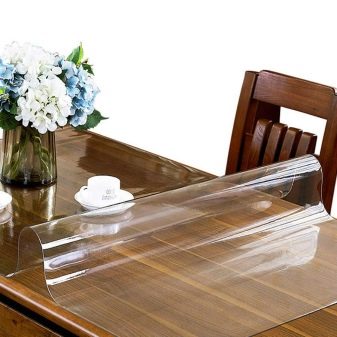
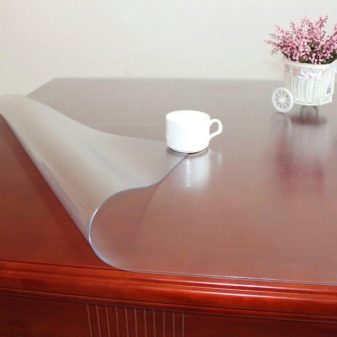
If it is a thick “flexible glass” tablecloth, it is better to straighten it right on the table, immediately after purchase. And clean in the same place, turning it over to the other side. The more you wear it, roll it up, the less time it will retain its original shape. And it is not so important whether it was purchased for the kitchen or for a large dining table in the living room.
Let the choice delight you for a very long time!
